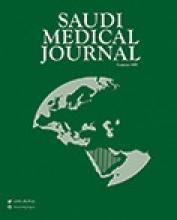Abstract
OBJECTIVE: Although there is some evidence indicative of some beneficial effects of an increased meal frequency on the lipid profiles, the results published are controversial. The aim of the present study is to investigate the effects of feeding frequency on blood lipids, glucose and insulin.
METHODS: The subjects of this study were 15 healthy non-smoker males aged 27.2 +/- 6.4 years. All subjects were placed on 2 identical diets in which they consumed the same food either as 3 meals at 7-hours intervals (gorging diet) or as 9 snacks at 2 hours intervals (nibbling diet). Each diet was of 2 week's duration and was separated from each other by a period of 3 weeks. At the end of both diets, the plasma was obtained from fasting blood samples and its lipid levels were determined. The study was carried out in Tabriz University of Medical Sciences, Tabriz, Iran between 30 October 1998 and 19 December 1998.
RESULTS: The nibbling diet was associated with an increased level of glucose (p<0.01) and a decreased level of insulin (p<0.05). The plasma levels of total cholesterol, triglyceride, low-density lipoprotein, and lipoprotein (a) were found to be lower in the end of nibbling diet compared with the gorging diet, however, only for the last parameter this reduction was significant (p<0.02). The nibbling diet resulted in an insignificant increase in the high-density lipoprotein concentration.
CONCLUSION: Taking into account, the difficulty in following the nibbling diet with a fear of weight gain, there would be no advantages in recommending the nibbling dietary pattern for normal free-living subjects, although its metabolic benefits in obese people could be the subject for further studies.
- Copyright: © Saudi Medical Journal
This is an open-access article distributed under the terms of the Creative Commons Attribution-Noncommercial-Share Alike 3.0 Unported, which permits unrestricted use, distribution, and reproduction in any medium, provided the original work is properly cited.






